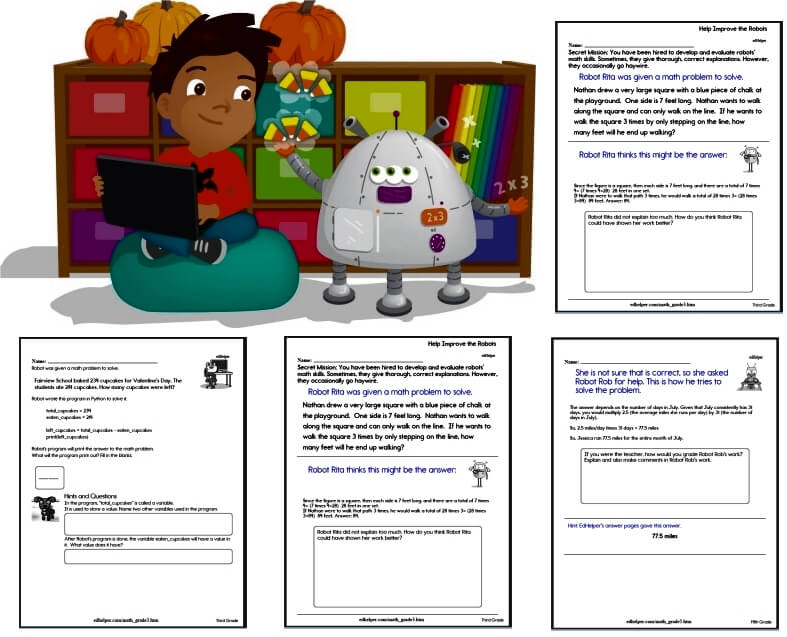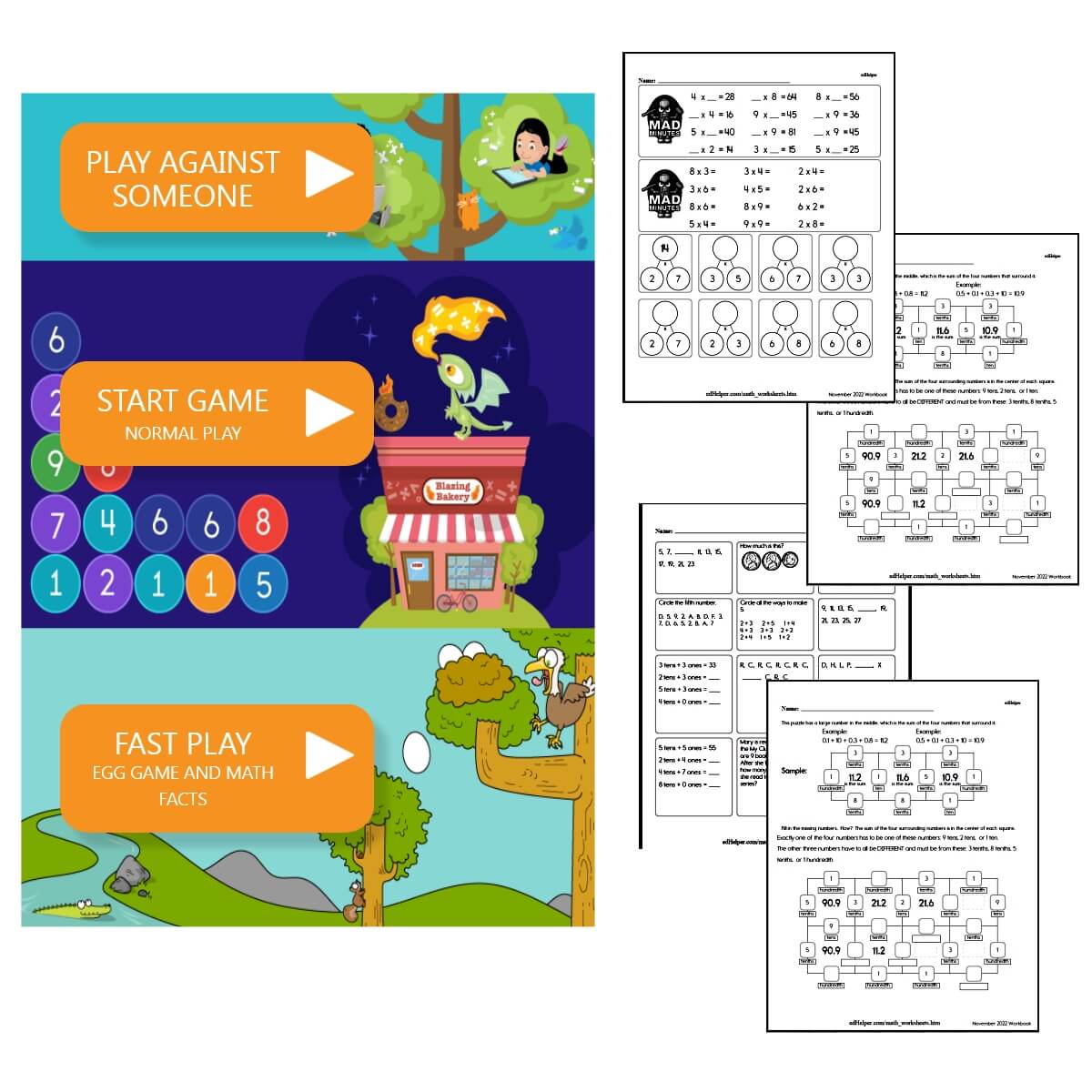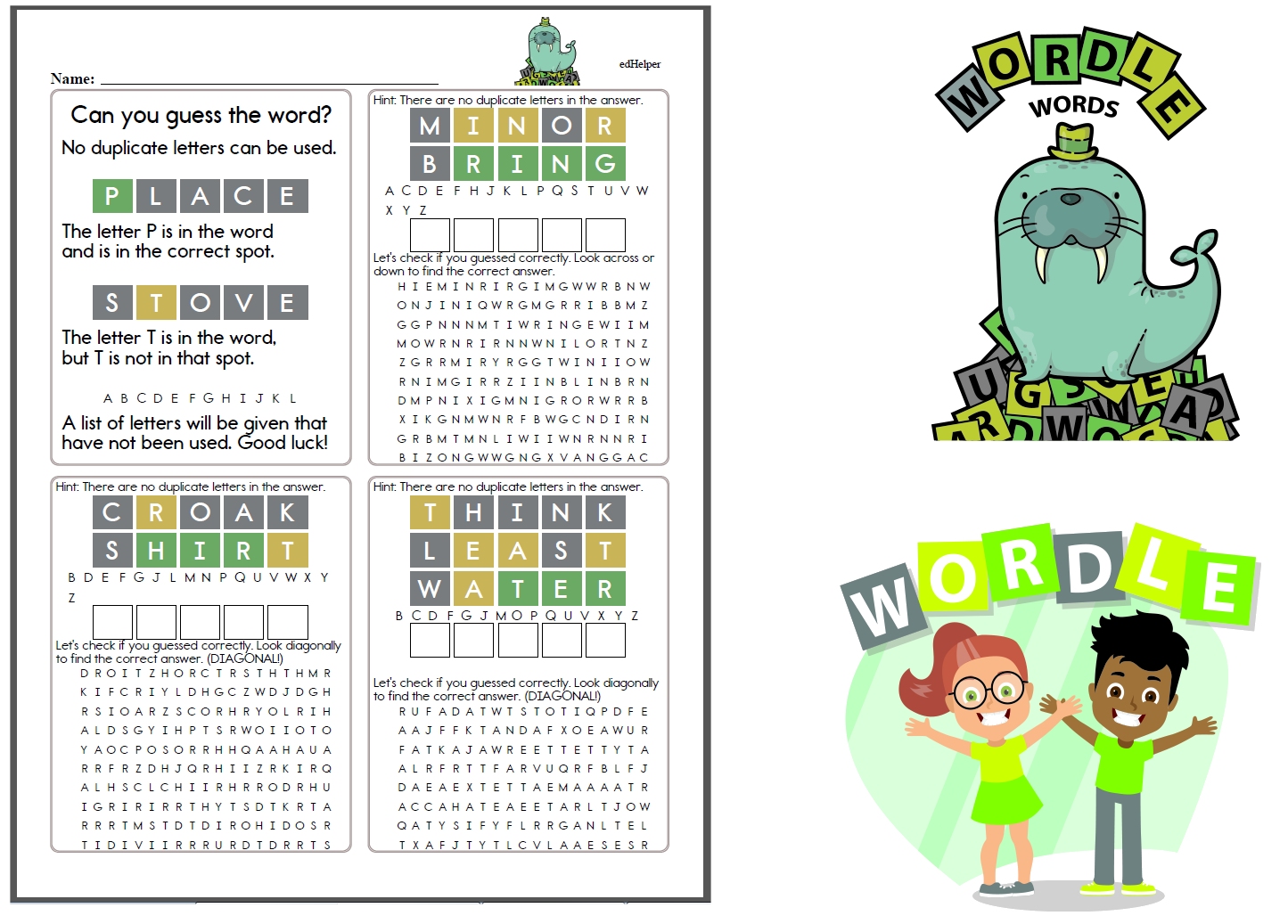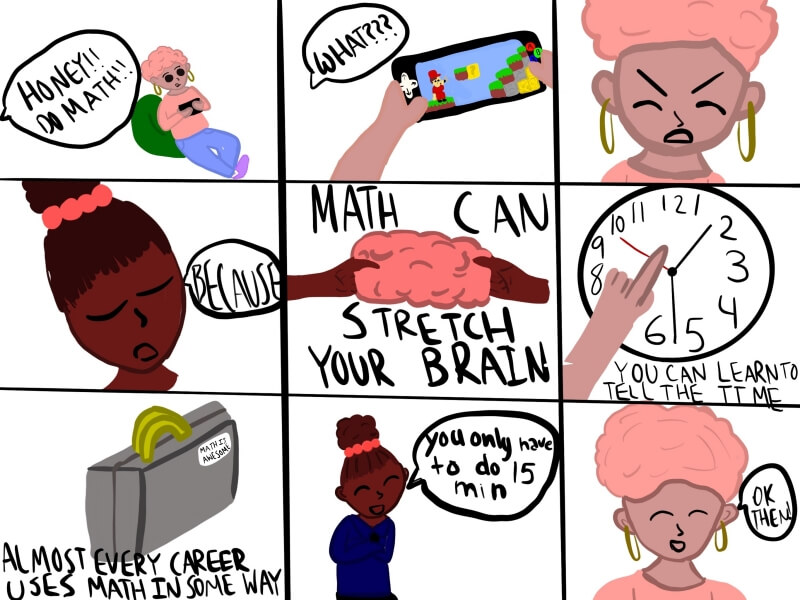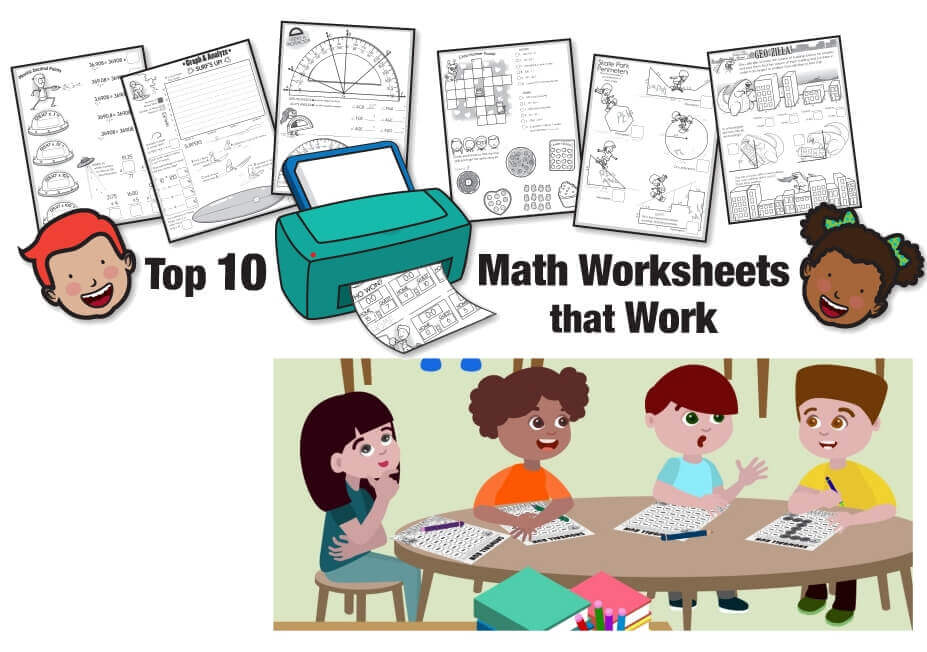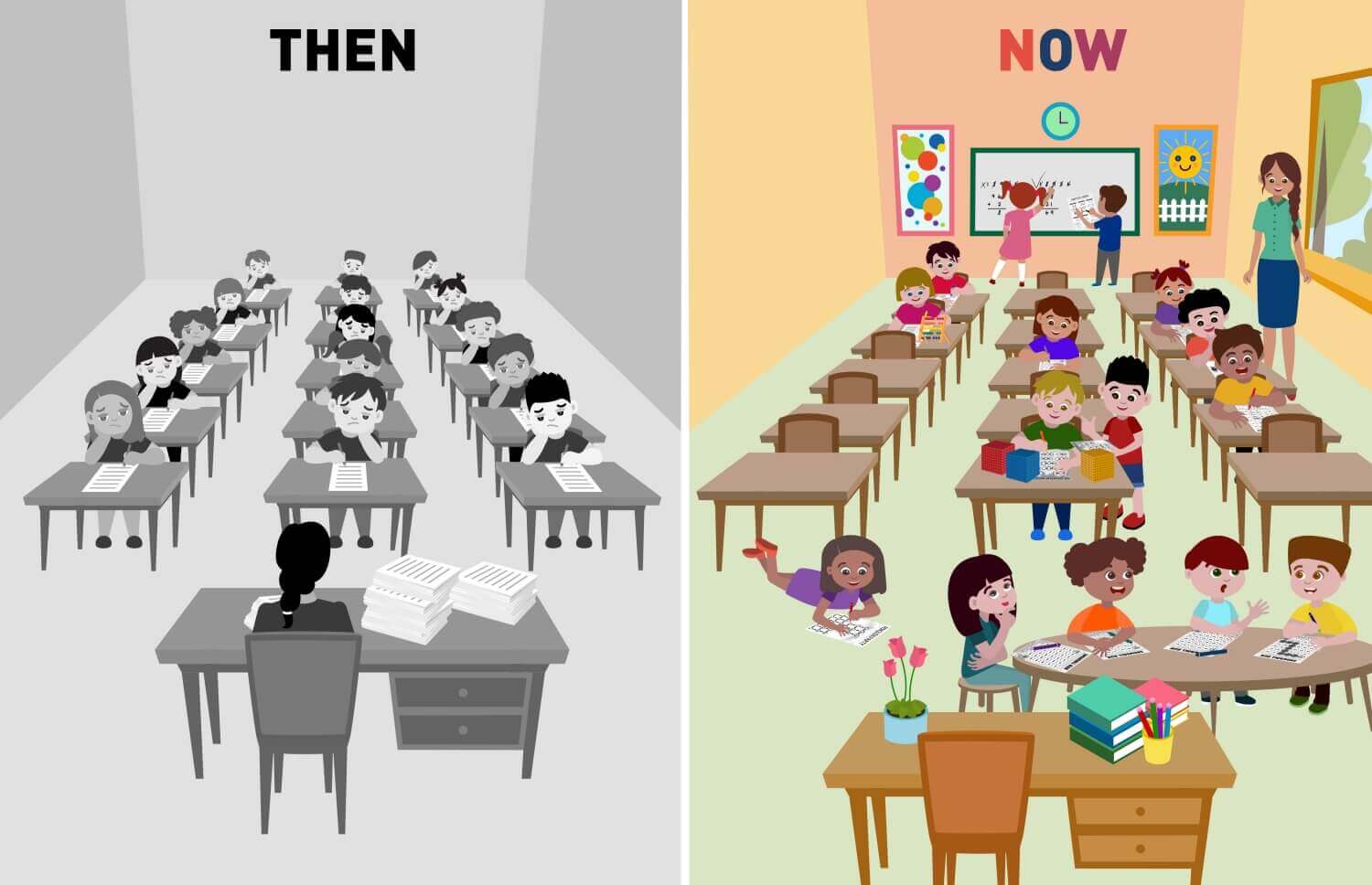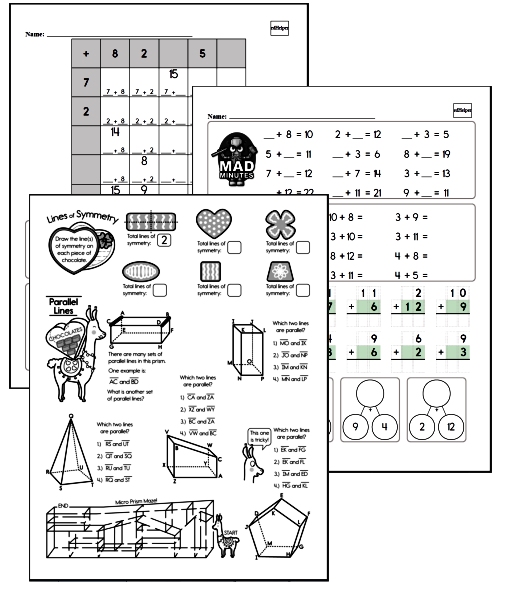Second Graders Distance Learning Packet #1
Third Graders Distance Learning Packet #1
Fourth Graders Distance Learning Packet #1
Fifth Graders Distance Learning Packet #1
Sixth Graders Distance Learning Packet #1
![Combine Math Workbooks and Online Practice for Better Distance Learning [with Free Printables] Combine Math Workbooks and Online Practice for Better Distance Learning [with Free Printables]](https://imgs.edhelper.com/best-teaching-and-classroom-ideas/Combine-Math-Workbooks-and-Online-Practice-for-Better-Distance-Learning-with-Free-Printables.jpg)
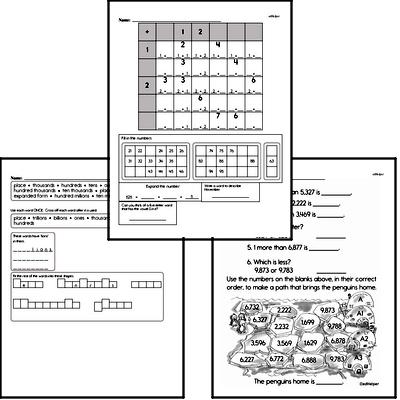
First Grade - Numbers to 10 (Chapter #1 - Distance Learning Digital Workbook)
Second Grade - Numbers to 1,000
Third Grade - Numbers to 10,000
Fourth Grade - Place Value of Whole Numbers
Each workbook includes a page that instructs kids how to use edHelper's new online math curriculum to practice math online, focusing on place value skills, whole numbers, and chapter #1 math skills.
Teachers have always had a challenging job, especially when it comes to math. Knowing important skills, like whole numbers and place value, is vital when learning more complex math skills later down the road. Unfortunately, students often become frustrated when learning these skills, and many find them difficult to understand. It's the teacher's job to make learning these skills relevant and fun. More importantly, it's the teacher's job to make ensure that these concepts make sense so they can easily be applied to skills the students will learn later, like addition, multiplication, and fractions.
Although this has never been easy, teaching math is much easier to do in person. That's why the CDC is stressing the importance of reopening schools this fall. However, returning to school in the midst of COVID-19 may be unsafe for students and especially teachers, which is why many schools will be relying on distance learning at least part of the time for the foreseeable future. This year teaching is like it has never been before. That's why we celebrate and say that teachers are heroes!
Is it possible to teach young students important math skills in a meaningful way when teachers can't be there in person to instruct and support their students?
Here at edHelper, we definitely think it's possible! Especially since we are the only online resource to provide math workbooks that are paired with online distance learning, enabling kids to benefit from more traditional forms of learning while having fun at the same time.
Technology is fun and tempting, especially for young people who are looking for fast and easy ways to do math. Although there definitely is a place in math learning for calculators and tablets, nothing compares to putting pencil to paper when doing arithmetic.
That's where traditional workbooks come in. When students have to use a pencil and paper, they are forced to slow down and think about what they are doing. They are more likely to think critically about the problems they are solving, which forces them to "think about their thinking." This means students are thinking about their thought processes, what they know, and what they don't know about the problem they are working on. Technology enables students to bypass these deep thoughts easily to find the answer as fast as possible.
This deep thinking is what we're likely to lose as online learning takes over this fall, and students are forced to stay home. Teachers who want to encourage students to put pencil to paper when learning math can find an extensive resource of traditional workbooks.
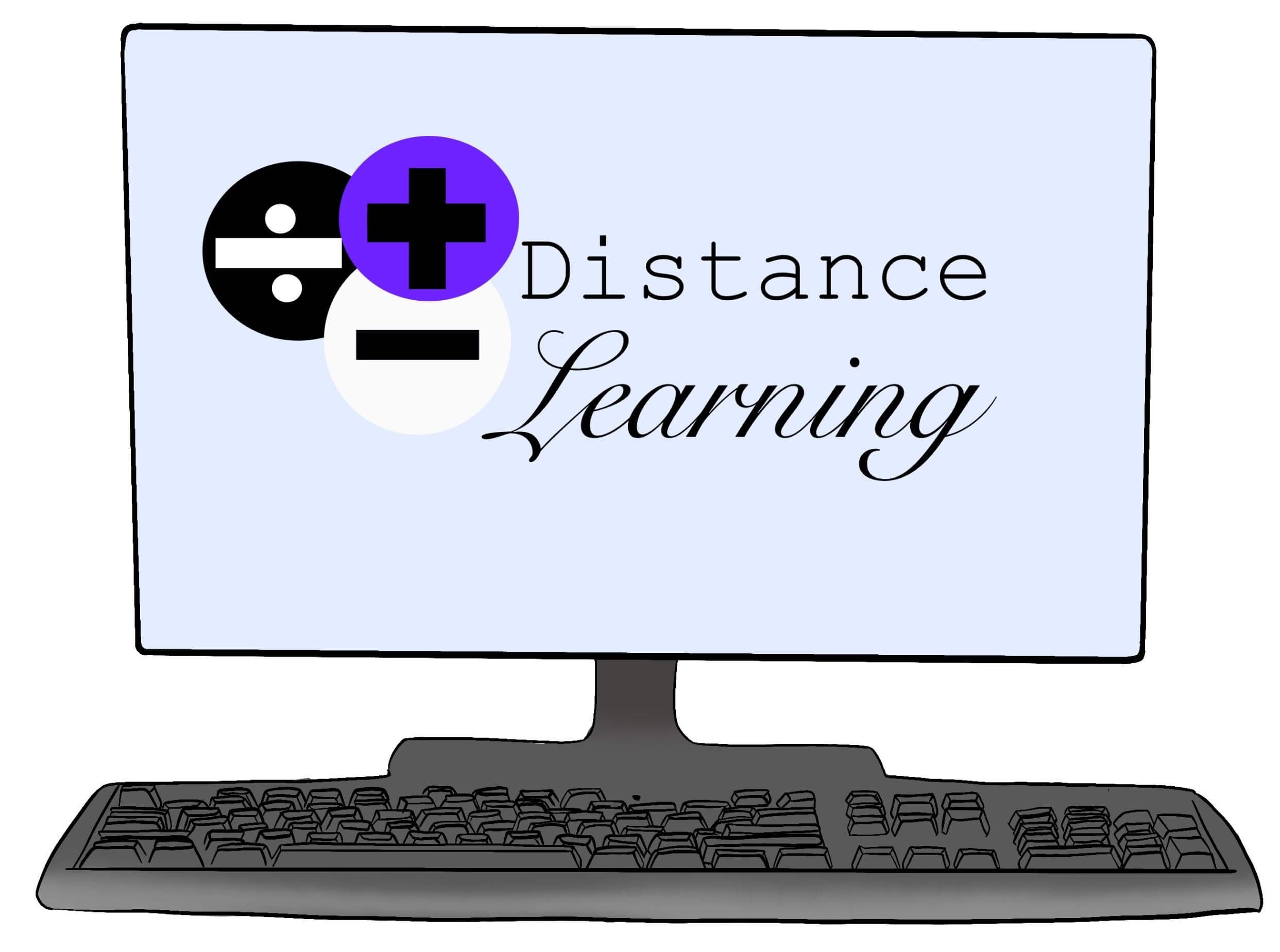
Assigning workbooks and asking students to write out their thinking is a great way to activate their brains, but that doesn't mean there aren't great things to be said about online learning games!
Few students would agree that doing worksheets is fun. Instead, most kids are motivated by technology, and they are definitely motivated by fun activities and games. Digital math games combine both technology and fun games, enabling kids to learn more about the math concepts they are being taught. They also have the added benefit of helping students enjoy math more, so they're more likely to tackle hard concepts as they come up in future lessons.
Of course, the quality of the math games that the kids play is important. The game should correct students as soon as they make a mistake. The best games help students understand their mistake and give them a chance to fix it.
Teachers are facing unique challenges this fall. Fortunately, there are many ways we can support our teachers. Here at edHelper, we've created a series of math workbooks that are paired with online distance learning games teachers can use to encourage children to utilize their critical thinking skills, then play online math games where they can utilize the thinking skills they have just practiced.
As a matter of fact, only edHelper offers math workbooks that are paired with online learning games! That means teachers don't have to hunt down worksheets and then math games that address the same skills as the worksheets they assigned.
Click here to access the portal where math games can be played. We have created specific versions of our Let's Play School game that can now be played online, not just on our app. Each concept is filed away under the corresponding grade where it is introduced.
Click on the grade you're working with to get started. You will see the math skills our game tackles for this grade level, as well as a corresponding math workbook that can be assigned to students while they practice the concepts by playing the game online.
We have strived to make it as easy as possible for teachers and students to use our resources. Unlike other math games that require you to download an app on a tablet or phone, our online learning games can be played right away on a computer at home. Games and workbooks are divided by grade level, so it's easy for teachers to pair worksheets with games that tackle the same skills, and it's easy for students to pick their grade level and play the game that their teacher assigned.
As a teacher, we know you want to see your students' progress as they play these math games. Students get a score every time they play, and that score can then be recorded for the teacher to review. The student can also keep playing the same game to try and get a better score!
Math learning isn't going to look the same during these unprecedented times, but with a little help from edHelper, and plenty of flexibility and perseverance, students can continue to learn important math skills at home while distance learning is the norm.
